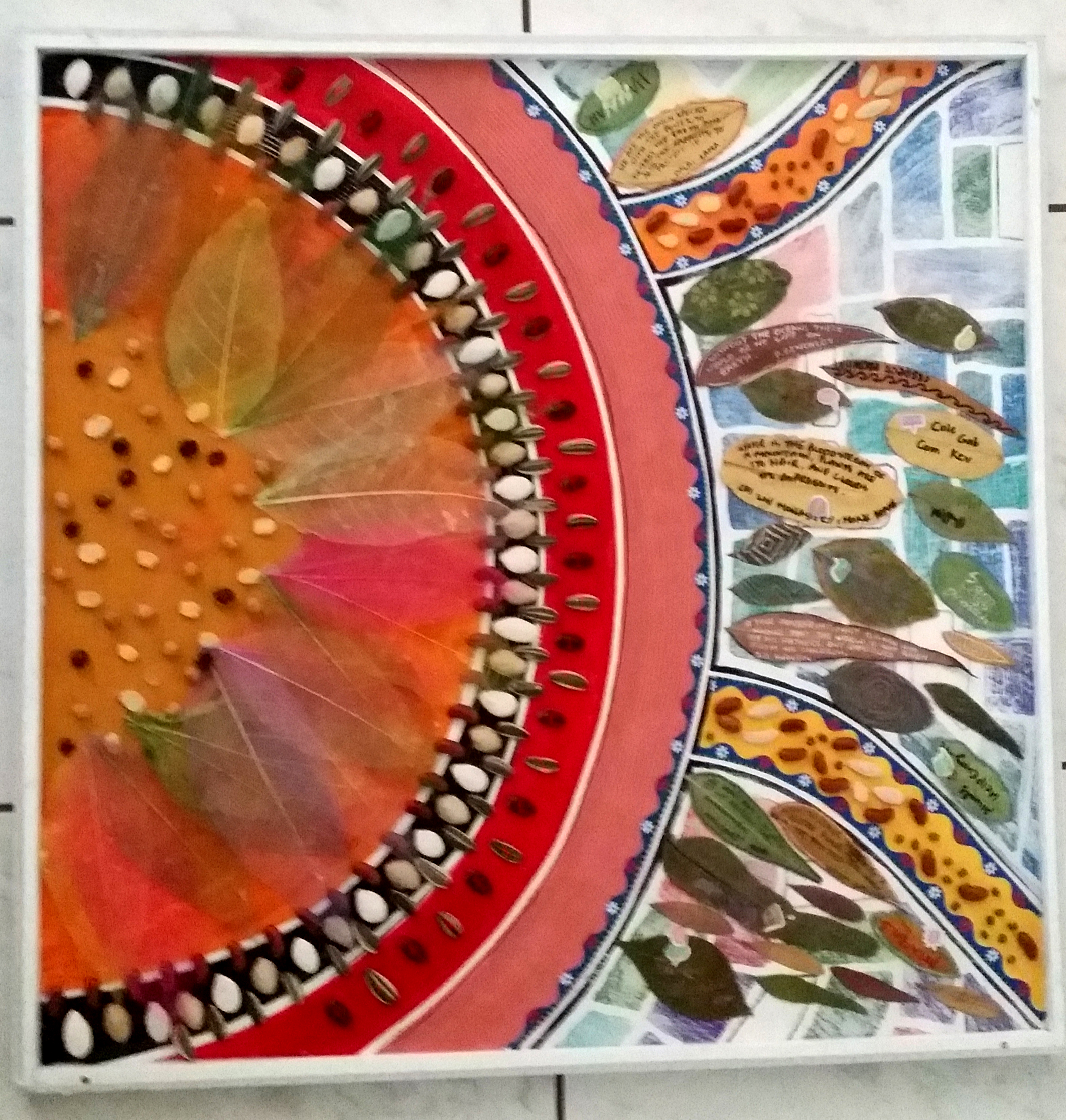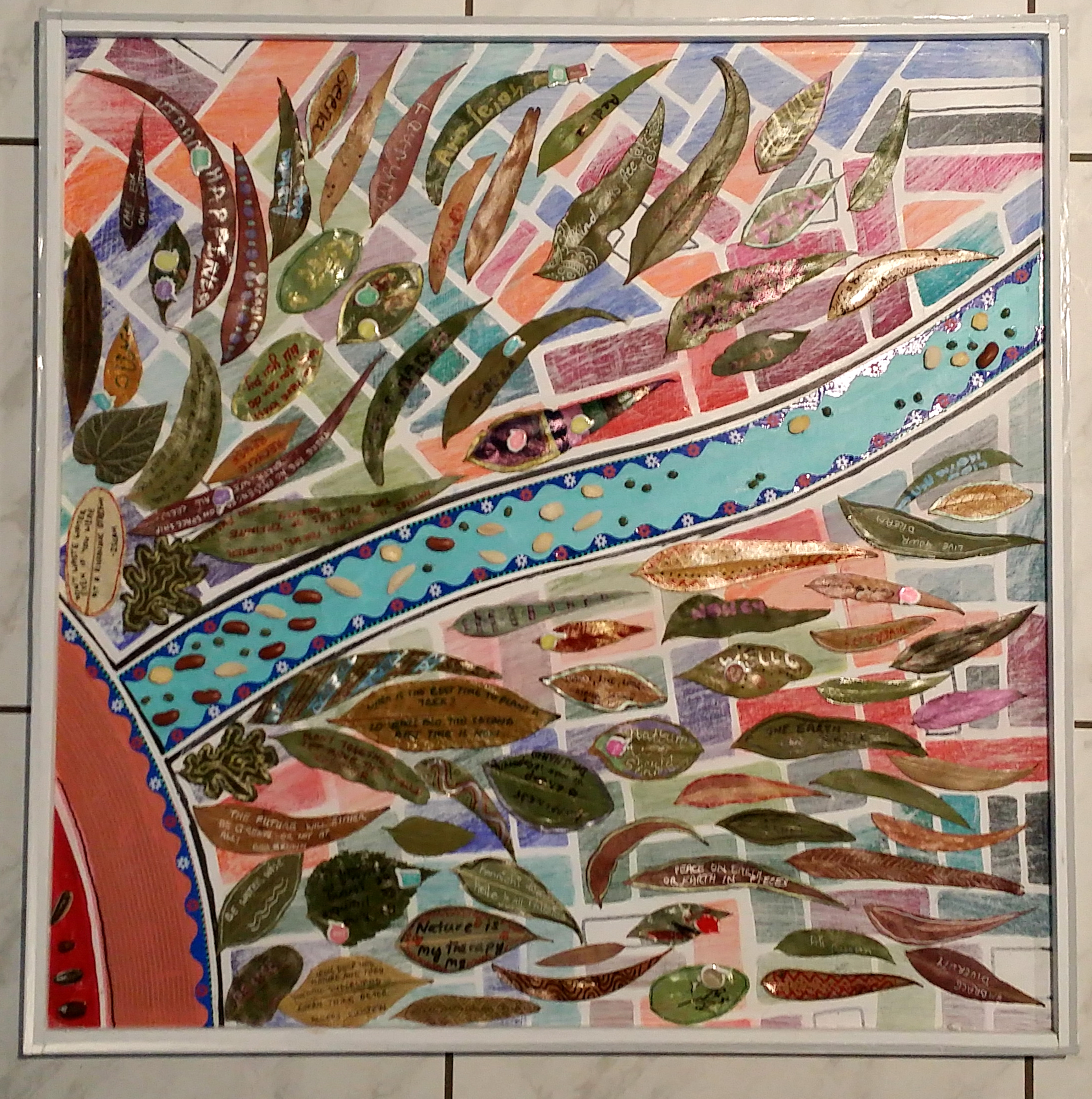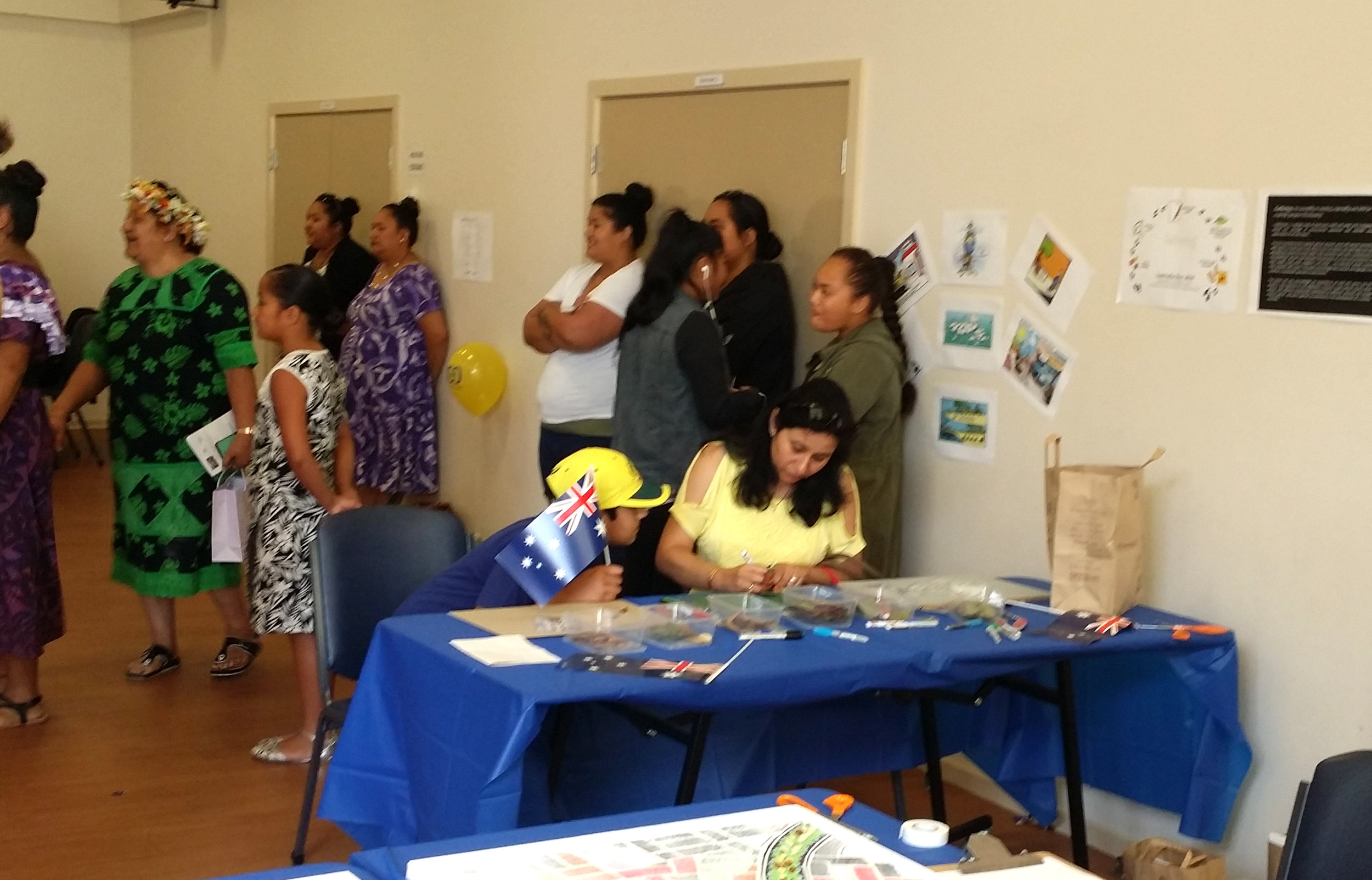This blog is about the 2019 Australia Day art activity held at Balla Balla community center which was aimed to highlight the power of meal to bring people together.
Read MoreGathering
The Aboriginal people have populated the land mass of Australia for more than 60,000 years. Over this period they have developed a diverse relationship and understanding of the Australian Environment and this understanding and knowledge has been passed down from generation to generation. The first Australians have a special spiritual, physical, social and cultural connection with their “country”, to them land is not only the source of identity and spirituality, but also provides the context for human order. Their connection with land is underpinned by the belief that ‘we don’t own the land, the land owns us’. As the land provides for all their needs –food, water, medicine, and shelter – the Aboriginal people treated their provider with respect.
I wanted to portray this intimate connection of the first people with their land as the core preposition of the artwork. I used dyed skeleton leaves, seeds and earthly / sandy colours to display this spiritual connection and depicted Mother Nature’s many and varied offering for its people by positioning the leaves to extend and reach out of the central core. In addition I surrounded the central core with seeds and shells to represent growth, development and life’s continuance.
"We cultivated our land, but in a way different from the white man. We endeavored to live with the land; they seemed to live off it. I was taught to preserve, never to destroy. -Tom Dystra"
The aboriginal connection of the artwork is further high lightened by the overall ensemble; as when the six panels are placed together they form a contemporary interpretation of indigenous symbol for a ‘camp site’. This concept also reinforces the title of the work- Gathering.
Most of the dried leaves used in this collage where collected in and around the City of Casey. Typically I dried the leaves for a week and then spray coated them with clear acrylic for protection and longevity. I transcribed a few quotes on environment and sustainability on these leaves to initiate the conversation prior to the exhibition and to provide focus and give examples to others. As more and more people joined this conversation on Australia day, and added their names and quotes, the artwork ‘grew’ and towards the end of the day, we ended up covering all the backing boards
The leaves on this collage not only acknowledges humans dependence on land and nature, but the display is also reflective of and celebrates a dynamic multi-cultural Australian society where people with different backgrounds ‘gather’ and work together to contribute to the development of a country.
While the ‘Australia Day’ date and its association with the arrival of first fleet to establish a convict colony in New South Wales is a matter of contention and marked with countries darker past, which most would like to forget rather than celebrate. Still, Australia Day wether seen as Invasion Day or Survival Day does present an opportunity to discuss, reflect, understand and appreciate our ‘Australian’ ethos and commemorate what is great about this country.
The objective of this artwork is just that. I hope the participants who come to Balla Balla Centre on the day and those who would later view the finished artwork would realize the need for a sustainable and environmental friendly approach to living and are able to take this conversation further.
Last but not the least, I would like to take this opportunity to thank CHARM (Cultural Historical Association of Rodriguans & Mauritians in Victoria Inc) and management of Balla Balla Centre, whose continual support and encouragement has made this project a possibility.
"The land is my mother. Like a human mother, the land gives us protection, enjoyment and provides our needs – economic, social and religious. We have a human relationship with the land: Mother, daughter, son. When the land is taken from us or destroyed, we feel hurt because we belong to the land and we are part of it. -Djinyini Gondarra"













